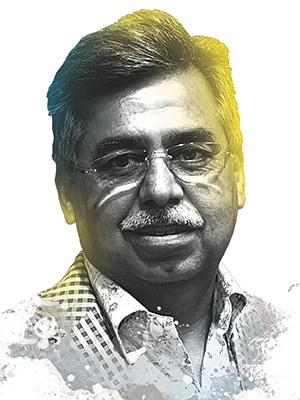
Pawan Munjal: Want a High-Octane 60 Months from the New Government
Urgent and decisive action will set the tone for the new administration. To begin with, kickstart investments, decentralise project execution and automate processes
India is at the crossroads. Along one path, one can envision world-class technology, infrastructure, education and health care. The other conjures images of a ragged country moving in slow motion. Irrespective of whichever political formation comes to power, the new government will have to choose the right road. It must reinvigorate India across multiple levels, and do it decisively and quickly.
I say decisively and quickly because India’s talented and enterprising young men and women are frustrated. They are eager to compete with the best in the world, but they are being kept on a tight leash —not by their instincts, not by their parents, but by a creaking and wobbling infrastructure. They are being restrained by an ineffective policy and governance system.
Consider the main slogans or planks—mudda, if you will—in the ongoing elections. They show us just how much we have fallen behind in comparison with the other economies of the world. Even as countries such as China, Japan, Singapore and Malaysia move speedily up the value chain with top-class infrastructure and manufacturing, we fight elections on the planks of sadak, bijli aur paani (roads, electricity and water). These were the same slogans in the previous elections. There is a sense of déjà vu.
To be fair, the first decade of the new millennium gave hope. Even when this decade started, GDP was growing at close to double digits. As the productive and consumption capacities of the economy expanded, commentators, analysts and investors touted India as an emerging superpower. Today, the country is struggling to notch up GDP growth of even 5 percent! The challenges have been documented extensively, and are broadly flagged under four categories—poor infrastructure, weak investment climate, joblessness and corruption. The new government has no option but to hit the ground running, and tackle each of these head-on. In a nutshell, it would need to kickstart investments, decentralise project execution and automate processes.

Nothing is more energising for a nation than its government showing a commitment to act
We need expeditious action on pending reforms. Nothing is more energising for a nation than its government showing a commitment to act. An active government also has to give top-most priority to education and health care, and revive the investment climate in order to generate jobs. Several large projects are stuck for myriad reasons, ranging from environmental clearances to land acquisition. The manufacturing sector is grappling with roadblocks of its own, especially in the area of labour reforms. On each of these issues, the new government will need to act assertively and quickly.
There would, of course, be constraints, and these will test their mettle and resolve. For one, the new finance minister will have to contend with a grim fiscal situation, with total public expenditure growing much faster than GDP. This is the time for prudent management of financial resources. This is the time to bet on genuine fiscal federalism. The Centre needs to put more money in the hands of state governments instead of managing resources on its own. Experience from around the world shows that the fiscal multiplier through states is three times bigger than the fiscal multiplier from the Centre.
Of course, policy reforms will come to naught if we don’t take the bull of corruption by its horns. The popular Jan Lokpal movement showed people’s frustration with a corrupt system. So, on top of the new government’s agenda should be a “zero tolerance” policy towards corruption. With a sense of urgency, therefore, it needs to do three things: First, frame anti-corruption laws that are more punitive; second, strengthen the machinery that can implement these laws; and most importantly, incentivise and roll out e-governance across multiple levels.
I expect nothing short of an action-packed 60 months ahead. Vision needs the backing of execution. Idealism has to be tempered with pragmatism. And, above all, promises made during the heat and dust of political battle need to be fulfilled.
The world is watching.
(This story appears in the 30 November, -0001 issue of Forbes India. To visit our Archives, click here.)





